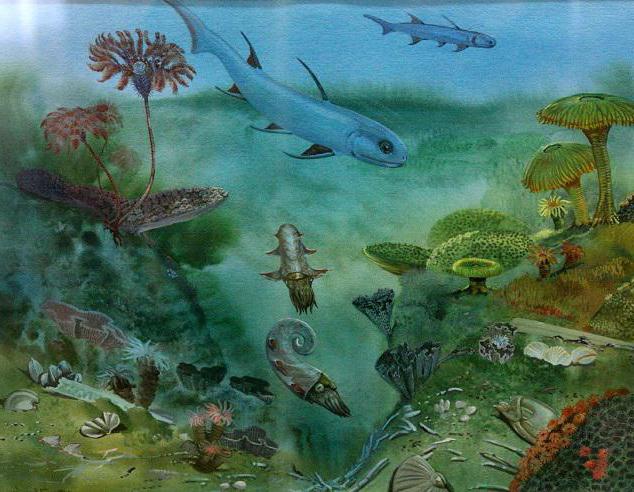Welcome to the Geological Time Machine, the one-of-a-kind invention that allows people an opportunity to visit past geologic times with sightseeing tours. Our unique product offers three types of tours designated for three geological eras. In general, the geological eras represent the distinct changes that the planet Earth and its environment faced through the course of history. The following travel guide will provide more detailed information about the characteristics of each era and its main attractions that you can visit through our tours.
Paleozoic Era Tour
Time period: Paleozoic Era began 541 million years ago and ended 252 million years ago


The Paleozoic Era defined the beginning of modern life and is characterized by the creation of various life forms and organisms. The Paleozoic era began with significant growth and development of new life and ended with a massive extinction of most creatures known as the Permian extinction. The processes of global warming caused the Permian extinction.

Mesozoic Era Tour
Periods within the ara: Cambrian, Ordovician, Silurian, Devonian, Carboniferous, Permian

Time period: Paleozoic Era began 252 million years ago and ended 66 million years ago.

The Mesozoic Era is the second major geologic era that is widely known for the existence of dinosaurs. In addition, this era is also characterized by the development of the early ancestors of modern animals. This tour is recommended for the younger audience and people interested in animals. The mammal animals, birds, and several plants developed during the Mesozoic era. The era could also be characterized by a different climate that was significantly warmer with mild distinctions between seasons. Similar to the Paleozoic Era, the Mesozoic era ended with a massive extinction from a meteor that struck the Earth. The place of the meteor’s landing, the Chicxulub crater, is situated in Mexico.

Cenozoic Era Tour
Time period: from 66 million years ago until present days.


The Cenozoic Era is the last geological era that people currently live in. The Cenozoic era represents the age of mammals’ dominance over other life forms. The era is characterized by a drastic increase in the number of various species and subspecies of mammals and animals. Another significant moment that distinguishes the era is that the continents’ movement stopped in their current positions. The climate also has changed from warm and mild in the Mesozoic era. The temperatures significantly cooled down, which resulted in the formation of polar ice caps and glaciations. The tour of the Cenozoic era presents a series of time jumps that allow the visitors to witness the rise of mountains and the development of human settlements.

Periods within the era: Tertiary(Paleogene), Tertiary(Neogene), Quaternary.